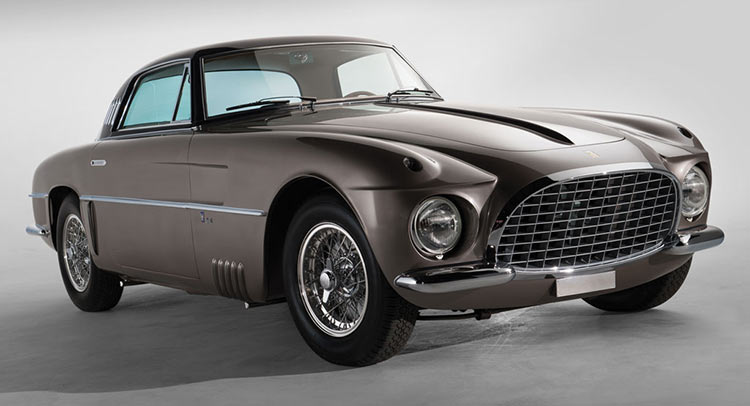Τhe LaFerrari is one of the most exclusive machines to come out of Maranello, since only 499 lucky customers had the privilege (granted by Ferrari) to acquire one. It may sound like a select few, but in comparison to this on-of-a-kind 250 Europa Coupe it is a lot .
Coachbuilt by Carrozzeria Vignale and designed by Michelotti, this stunning looking automobile is one of the most gorgeous embodiments of Ferrari’s first ever proper GT model: the 250 Europa.
In the car maker’s early days, Enzo Ferrari was obsessed with finding the right look for his road cars, in order to define the marque from a visual standpoint. Until then, all road-worthy cars bearing the Cavallino Rampante badge were derivatives of racing cars; thus, Ferrari himself courted different coachbuilders who provided him with various unique styles – depending on the company.
Ferrari built only 22 250 Europa models before introducing its successor, the Europa GT, and only four units were bodied by Vignale, making them a rare and desirable catch – and more desirable than Pininfarina’s 18 units.
Back then, Vignale was still a newcomer to the motoring scene, opening its gates only a year after the World War II. Still, from the first Ferrari to wear its tailored suit in 1950 to the end of their relationship in 1954, 154 different models and units were bodied by the Italian coachbuilder.
This Ferrari Europa, chassis 0313 EU, is a prime example of Vingnale’s coachwork. It exhibits many of the company’s traits and characteristics, including the front bumper-inserted headlights and its quite edgy overall shape.
It is powered by a 200 bhp, 2,963 cc SOHC 60-degree V-12 engine with triple Weber 36 DCZ/3 carburetors that’s mated to a four-speed manual transmission and features independent front suspension with double wishbones and double leaf springs and live rear axle with semi-elliptical springs and Houdaille shocks, the car was delivered in December 1953 to Luigi Chinetti Motors in New York City.
Following a premiere at the World Motor Sports Show at Madison Square Garden in January of 1954, it was repainted red and had several owners during its lifetime. Nevertheless, it was returned to its original form by Heinrich Kämpfer of Seengen, Switzerland, who spent 3,000 hours (!) working on it, with an additional 800 hours completed by outside specialists.
This ultra-rare Prancing Horse has won numerous accolades at various events; that and having a long and illustrious history makes it assessed by RM Sotheby’s between $3,800,000 – $4,500,000.































